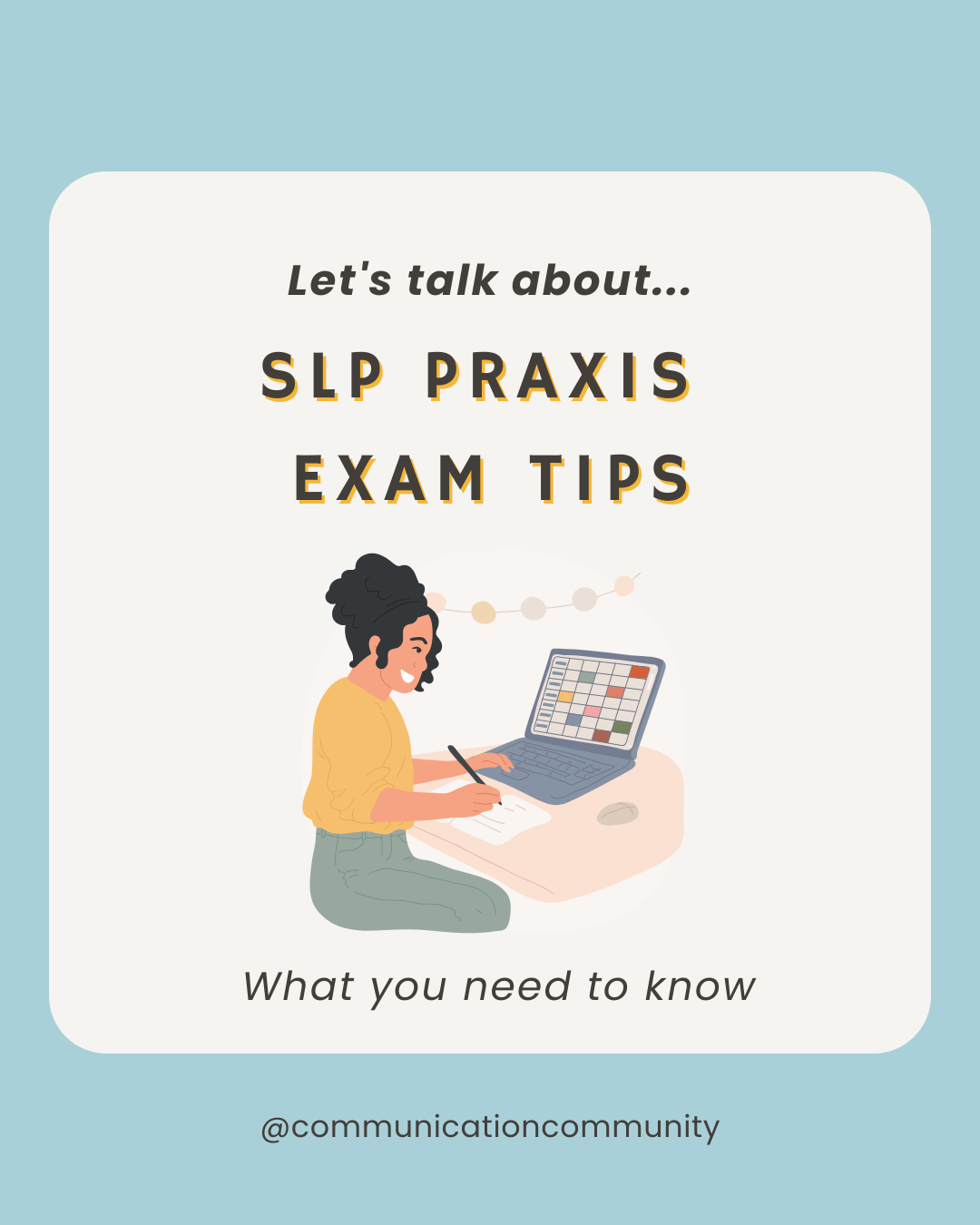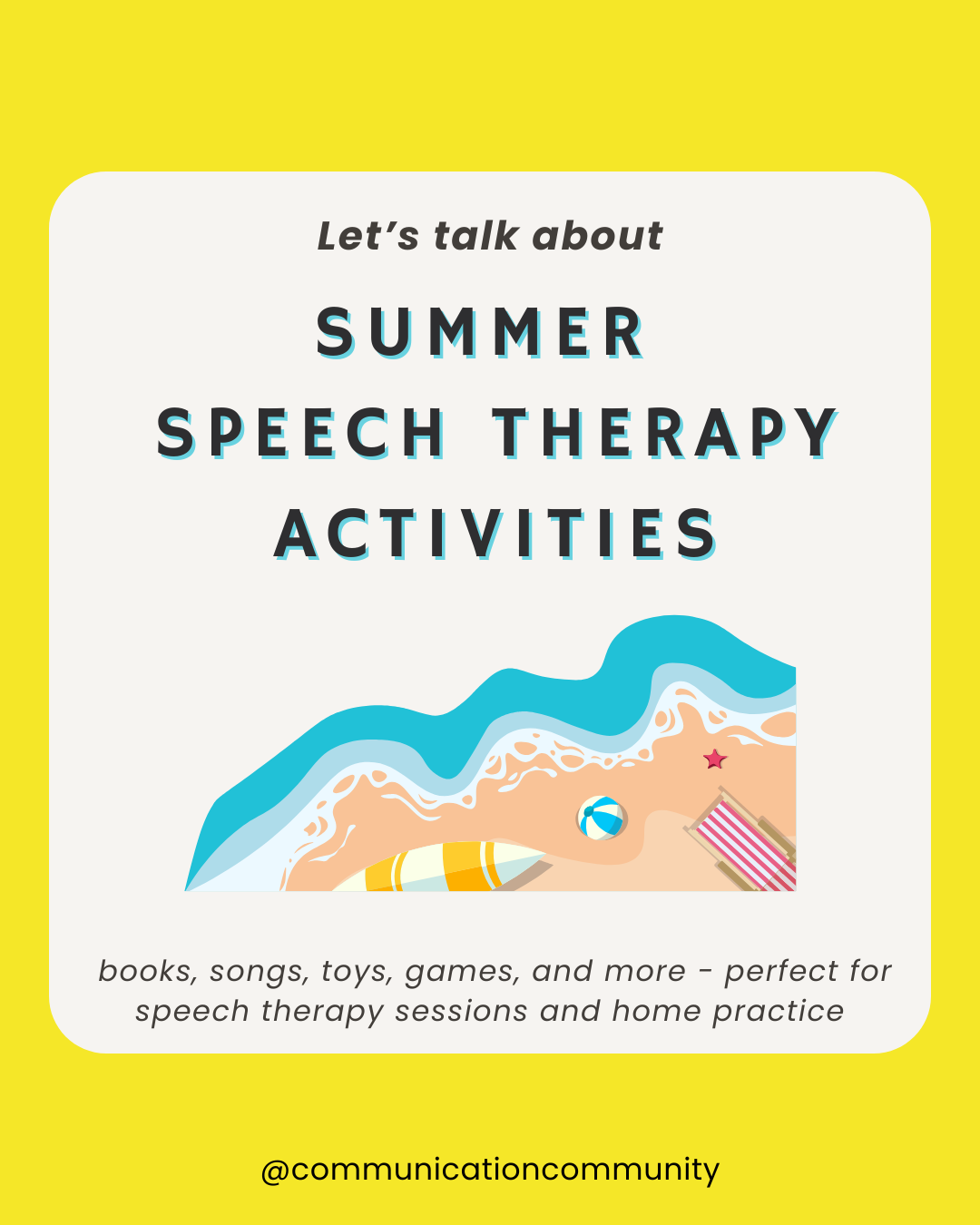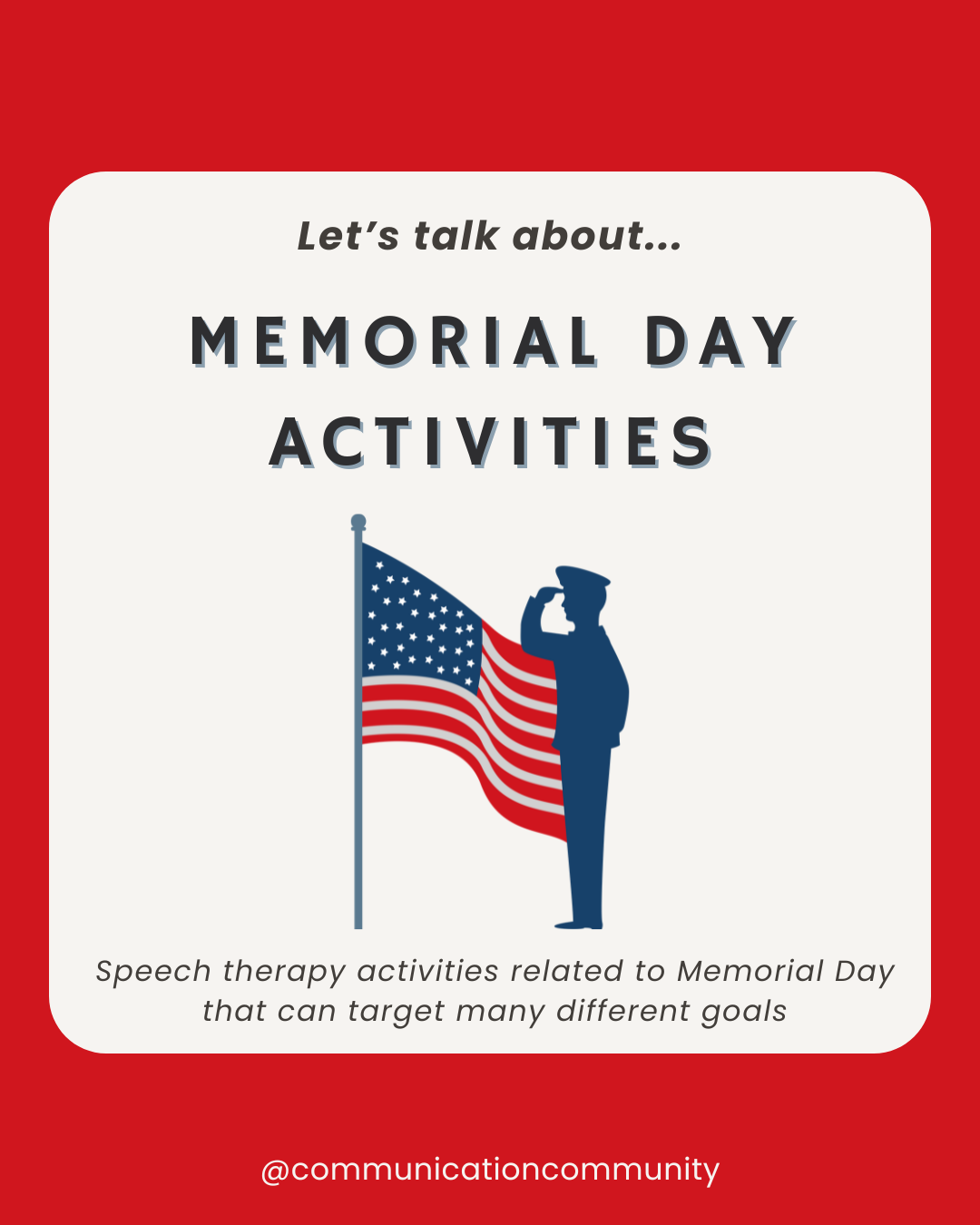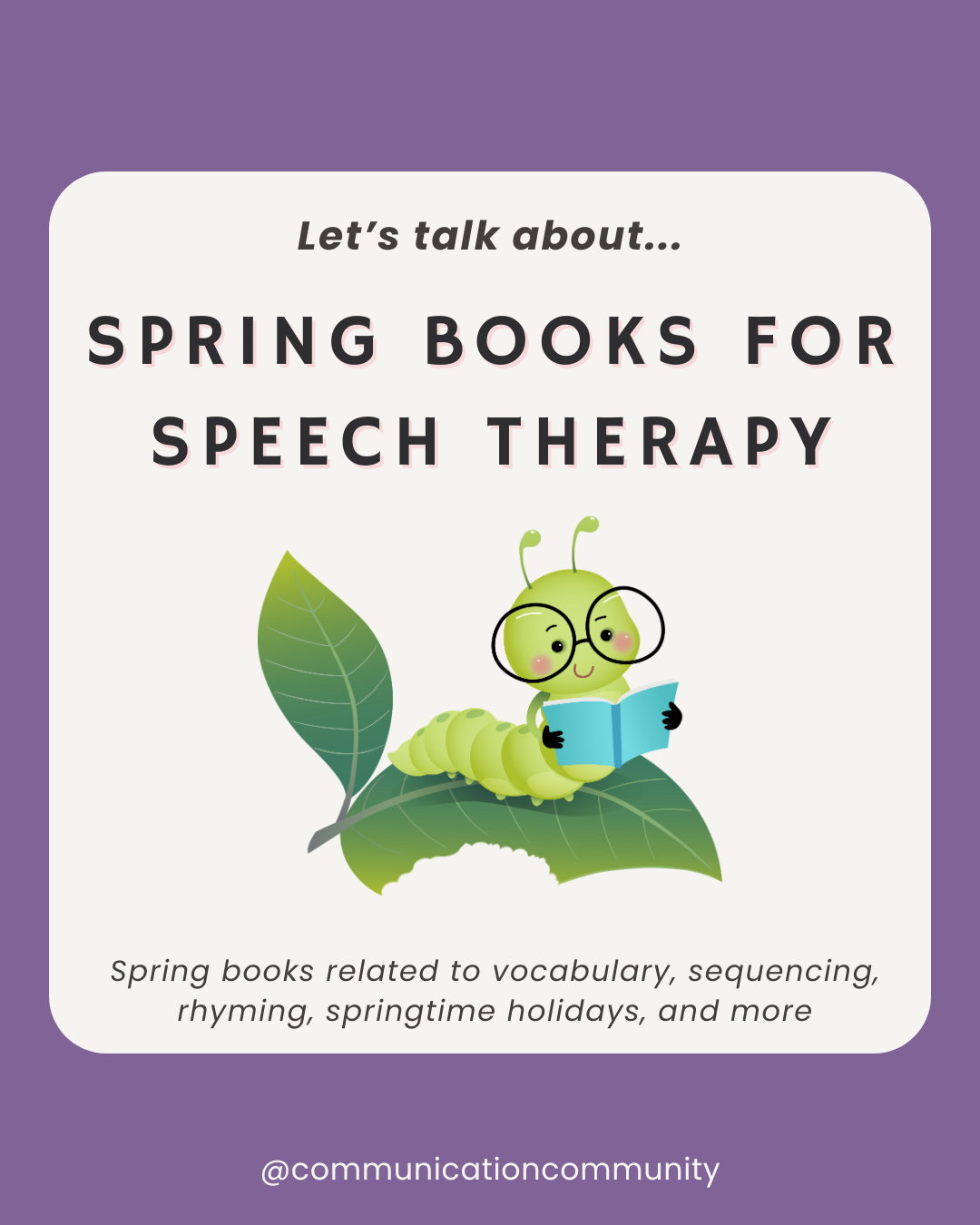Anyone who has a child or has spent time around a child can attest to this: children spend a lot of time playing! Most children love to play, get new toys, and play with others. As children grow up, how they play and what they play with changes. This is closely tied to their overall development.
When children play they are not just spending the time in leisure; play skills and development are related to language skills and development in children. In addition to language development, observing how a child plays can provide insights into their cognition, emotions, behaviors, and social skills.
It is important, both as professionals and caregivers, to understand the importance of play for development, as well as the typical stages of play. Equally important to understand is that there is no one "right" way to play and different cultures and individuals may view play differently. This article examines how different cultures may interact and play with children. As with all assessments and interventions, it is critical to consider an individual’s culture and how that may impact what you observe.
What Are Play Skills?
Play skills look at what children play with, how they play with toys/objects, and who they may play with. The greatest development of a child’s play skills emerges as early as 2 months until about 5 years. Different sources may label types and stages of play in slightly different ways, but this age range seems to be the overall consensus of the typical age of development of certain play skills. In this case, we will look at 4 types of play: exploratory, relational, functional, and symbolic. Below are simple explanations of the categories with examples. For more information about play skills, this chart and this article provide greater details.
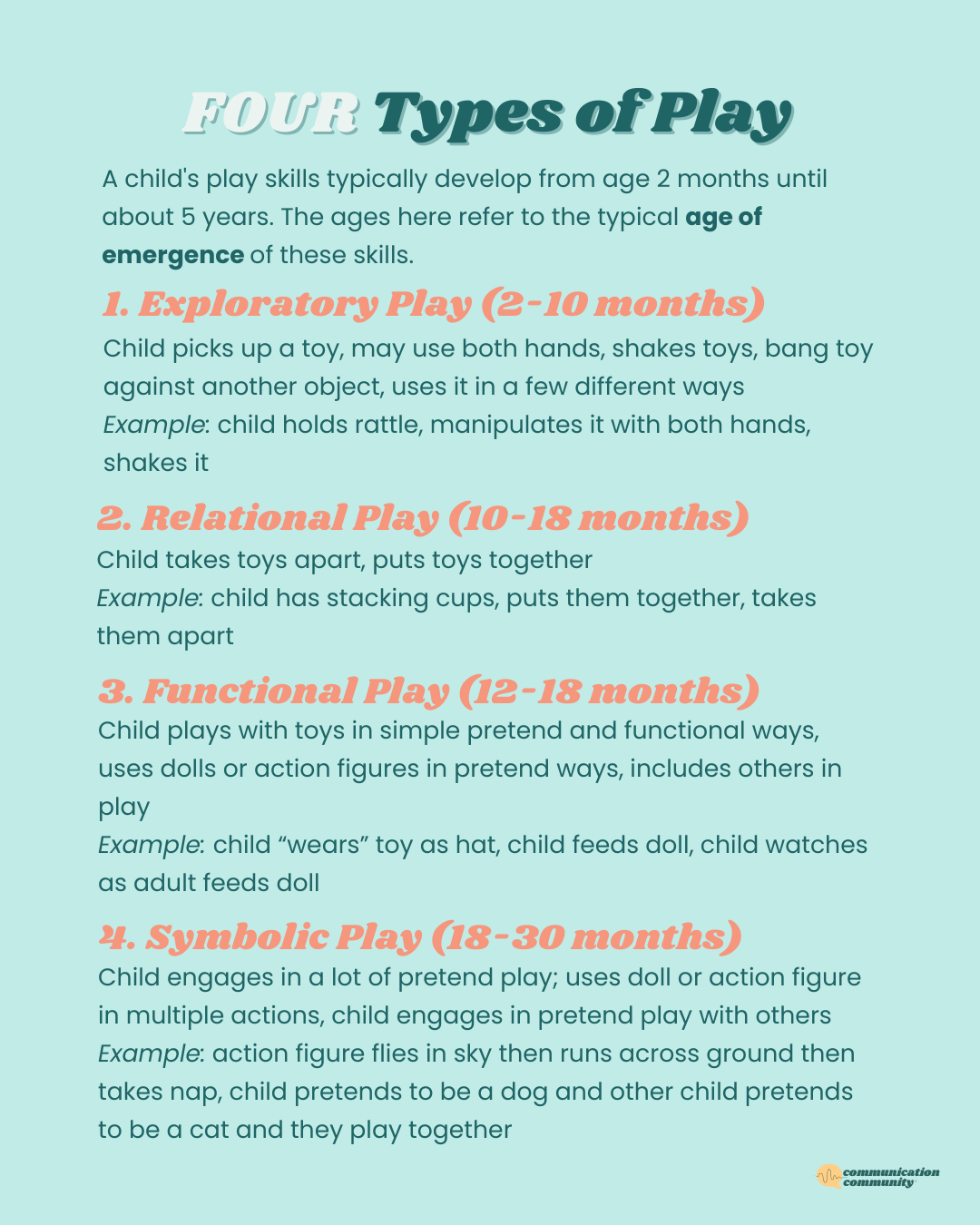
Why Are Play Skills Important for Language Development?
Play skills are important because they may be correlated with other skills, like language development. Language skills are important for younger children to develop as they pave the way for more advanced skills like reading and writing. Think about turn-taking within a conversation… some of the earliest signs that children engage in turn-taking (when they have limited expressive language) is through play!
Who May Have Play Skills Differences/Difficulties?
Autistic individuals may not demonstrate the neurotypical development of play skills. Other individuals, such as those with developmental language delays (DLDs) or ADHD, may have differences in play skills as well.
When writing play skills goals, we believe it's important to look at why you are targeting play skills. Someone not demonstrating "typical" development of play skills does not necessarily warrant intervention in this area. As mentioned earlier in this article, there is no one right way to play.
Writing Play Skills Goals
Below you will find our Communication Community Goal Writing Formula that we use for writing all communication goals (e.g., receptive, expressive, pragmatic, etc.).
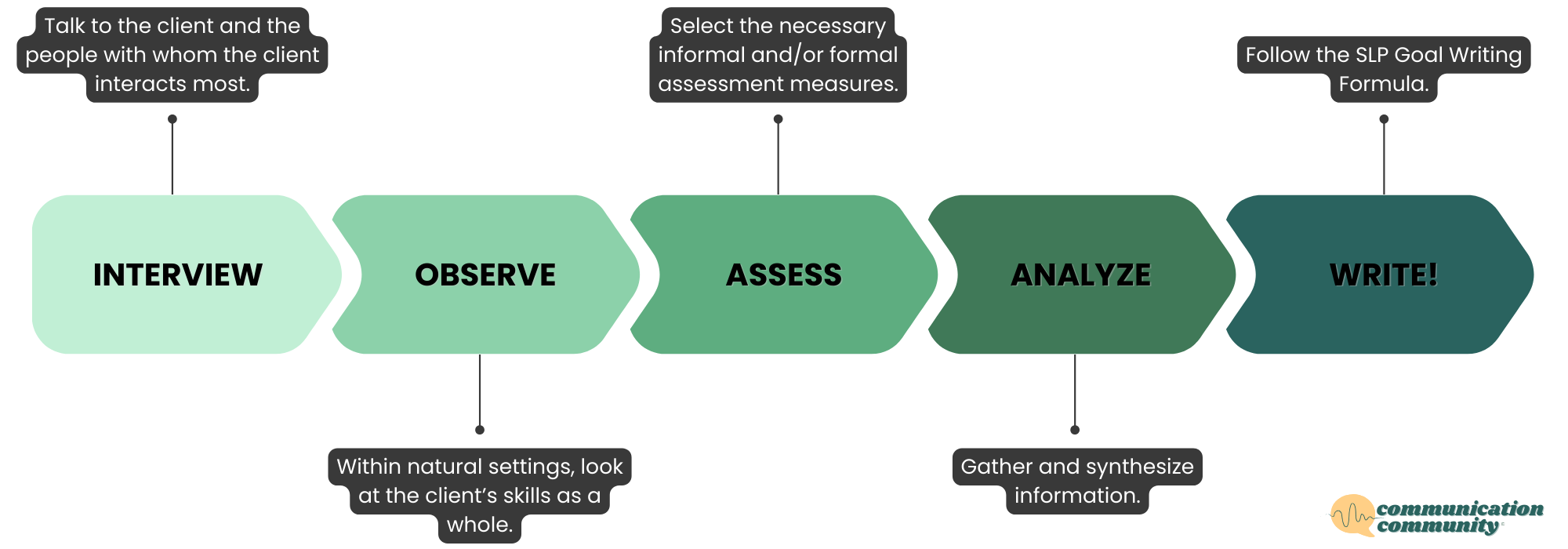
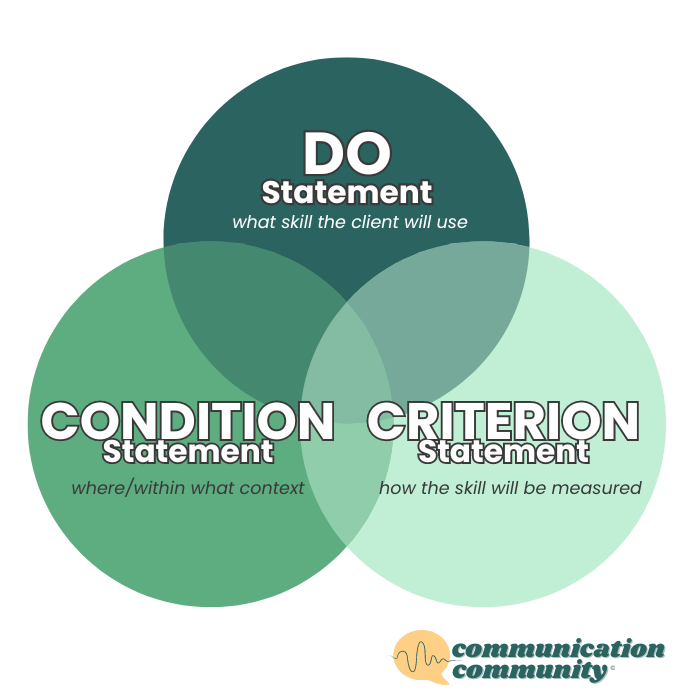
Steps for writing goals for speech and language skills (left); Communication Community goal writing formula (right)
As seen above, speech goals should be written with 3* components in mind: the DO statement, the CONDITION statement, and the CRITERION statement.
*Also commonly included is consistency (we incorporate this!). Aka does the individual have to meet a specific criterion more than once? A common example of this may include across 3 consecutive sessions. This is usually something understood by the therapy organization/service provider and is sometimes/sometimes not included in the written goal itself. This is to ensure that the skill has been generalized and provides more reliable data that the skill has been properly mastered.
DO statement
What the client is actually going to DO and the specific skill they will be working towards.
Example: engage in pretend play
CONDITION statement
The specific setting and/or context your client will work on this skill.
Example: in a natural setting
CRITERION statement
How the client’s performance will be measured.
Example: in 9 out of 10 trials
DO + CONDITION + CRITERION
Example: [Client] will engage in pretend play, in a natural setting, in 9 out of 10 trials.
There you have it! That is an example using our Goal Writing Formula containing the DO + CONDITION + CRITERION (don’t forget to think about consistency!) for an expressive language skill area.
Play Skills Goal Bank
Remember to keep in mind why you are choosing to target play skills. There are many different types of play and no one right way to do it. Understand cultural differences and neurodiversity when creating play goals.
Exploratory play goals
Example 1: [Client] will independently pick up and hold a preferred toy, in a familiar setting, in 8 out of 10 opportunities, across 3 sessions.
Example 2: [Client] will engage with a preferred toy once by shaking it, hitting it, squeezing it, or using it functionally in some way, in a familiar setting, in 8 out of 10 opportunities, across 3 sessions.
Example 3: [Client] will use preferred toy in 3 or more different ways (e.g. hit, shake, and squeeze) in 8 out of 10 opportunities, across 3 sessions.
Relational play goals
Example 1: [Client] will take items out of a toy/play structure (e.g. fish out of play aquarium), given a verbal or gestural prompt,* with 90% accuracy, in 2 out of 3 sessions. (*if including prompts in a goal, this is where you could include it)
Example 2: [Client] will assemble/arrange toy (e.g. stack ring), given a verbal or gestural prompt, with 90% accuracy, in 2 out of 3 sessions.
Example 3: [Client] will assemble/arrange multiple toys (e.g. stack rings, fish in aquarium, blocks in container), given a verbal or gestural prompt, with 90% accuracy, in 2 out of 3 sessions.
Functional play goals
Example 1: [Client] will play with toy in functional way (e.g. put ball in basketball hoop), in a structured setting, in 4 out of 5 opportunities, in 2 consecutive sessions.
Example 2: [Client] will use doll, action figure, or stuffed animal in pretend play (e.g. have doll ride in car), in a structured setting, in 4 out of 5 opportunities, in 2 consecutive sessions.
Example 3: [Client] will engage in turn-taking while playing with familiar partner, in a structured setting, in 4 out of 5 opportunities, in 2 consecutive sessions.
Symbolic play goals
Example 1: [Client] will use one object as another (e.g. fork as a microphone), in a familiar setting, in 9 out of 10 opportunities.
Example 2: [Client] will engage in pretend play with stuffed animal/doll/action figure for 3 or more consecutive actions, in a familiar setting, in 4 out of 5 opportunities, in 3 out of 4 sessions.
Example 3: [Client] will engage in pretend role play (e.g. act out doctor roles), given verbal or visual prompts from a familiar partner, with 90% accuracy.
Example 4: [Client] will engage in pretend play with a familiar partner, in a familiar setting, in 4 out of 5 opportunities.
⭐ Looking for more child language resources and speech therapy support?
Find additional play skills goals - plus many more - in our Early Intervention/Preschool Goal Bank (with additional resources)
You can access it a la carte style or find it when you join our Premium Community. As a Premium Community member, you have immediate access to this goal bank and resources plus parent/caregiver handouts, no prep therapy activities, additional goal banks, and so much more. Listen to Office Hours about carryover strategies and other clinicians who work exclusively with preschoolers!
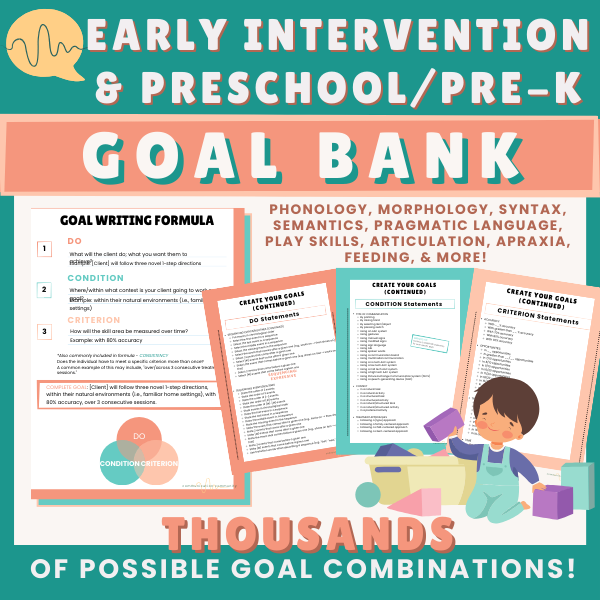
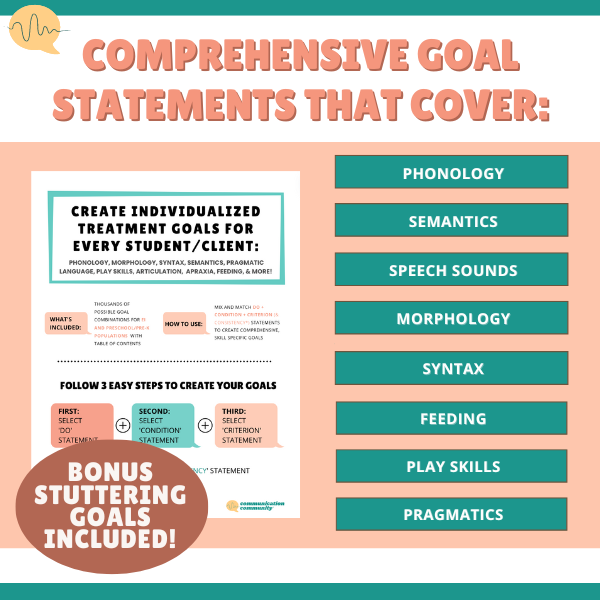
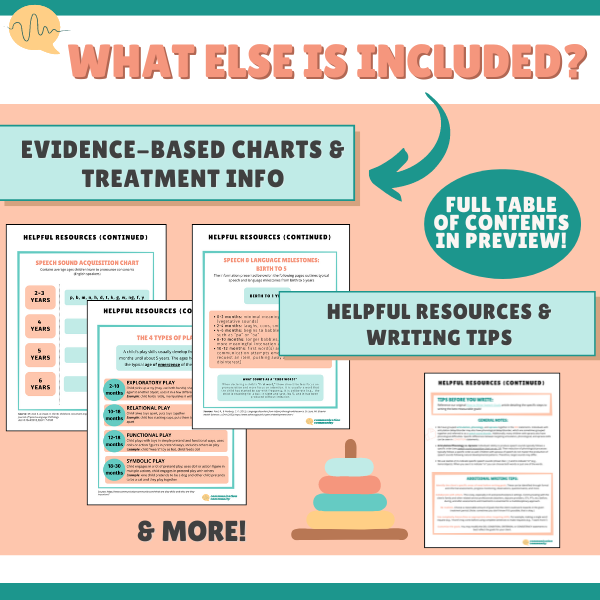
Get it a la carte in our Teachers Pay Teachers store.

Looking for more goal-related posts (with goal banks)?
Check out the others we have posted:
- How to Write Pragmatic Language Goals
- How to Write Receptive Language Goals
- How to Write AAC Goals
- How to Write Articulation Goals
- How to Write Expressive Language Goals
- How to Write Fluency Goals (Stuttering)
- How to Write Voice Disorders Goals
- How to Write Cluttering Goals
- How to Write Phonological Awareness Goals
References
American Speech-Language-Hearing Association. (n.d.). Multicultural considerations in assessment of play. The ASHA Leader. Retrieved from https://leader.pubs.asha.org/do/10.1044/multicultural-considerations-in-assessment-of-play/full/
Leech, H. M., Porter, J. M., & MacLeod, A. A. N. (2020). A scoping review of assistive technology for students with disabilities. Language, Speech, and Hearing Services in Schools, 51(1), 84-101. doi:10.1044/2020_LSHSS-19-00084
Lurie Children's Hospital of Chicago. (n.d.). Play developmental milestones. Retrieved from https://www.luriechildrens.org/en/specialties-conditions/pediatric-occupational-therapy/developmental-milestones/play-developmental-milestones/
Watson, L. (n.d.). Addressing social communication and play goals. Retrieved from https://mshausa.org/media/1364/watson-addressing-social-communication-and-play-goals.pdf

![How to Write Play Skills Goals [with goal bank]](https://www.communicationcommunity.com/content/images/2024/07/Play-Skills-Goals--updated---1-.png)
![How to Write Apraxia Goals [with goal bank]](https://www.communicationcommunity.com/content/images/2024/07/Apraxia-Goals--1-.png)
